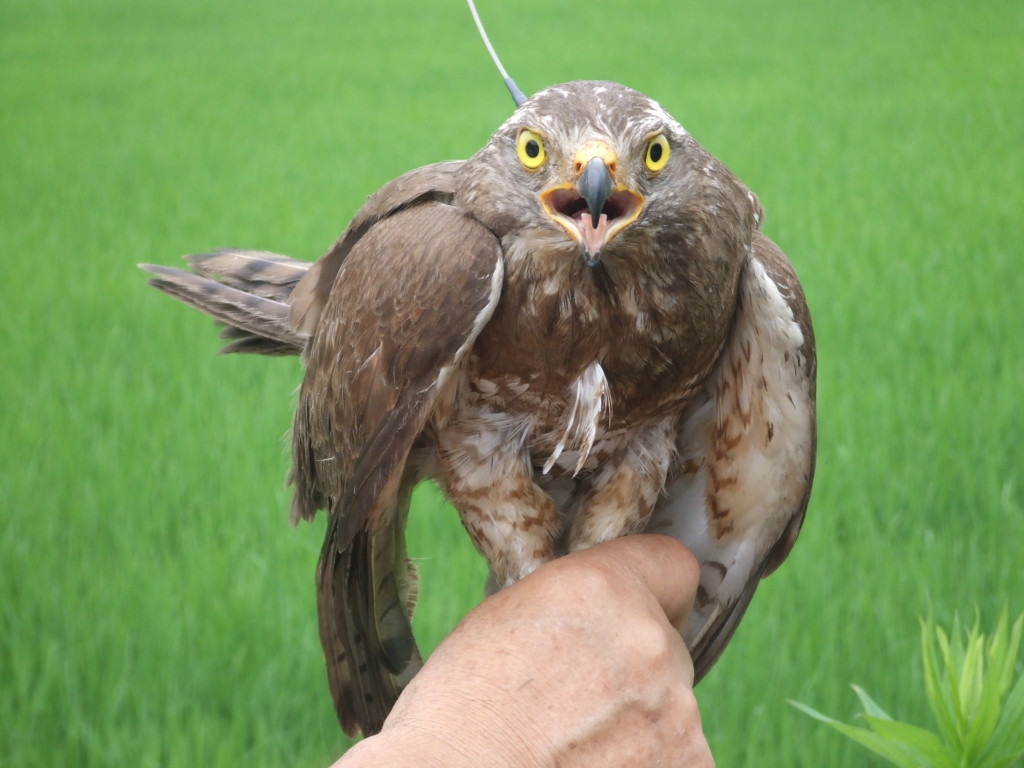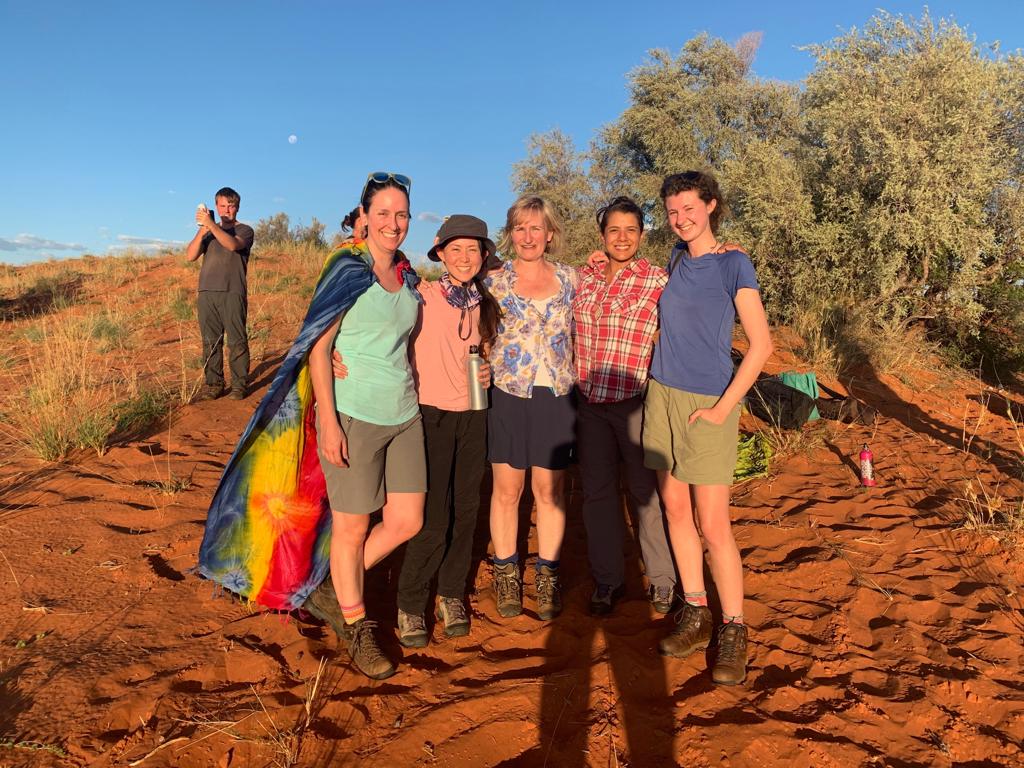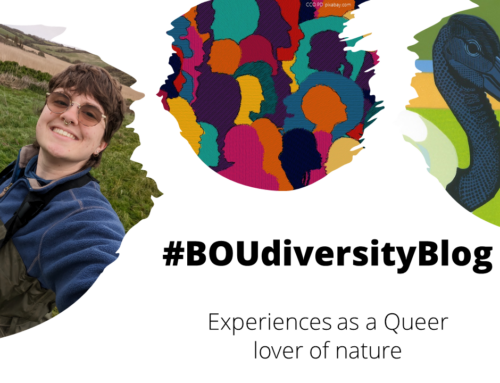
My name is Shoko Sugasawa. I was born and raised in Japan, and am now a research fellow at the University of St Andrews. I am interested in why birds – animals that lack hands – are so good at manipulating materials, constructing some of the most intricate structures we see in nature. I study this question using a combination of fieldwork and laboratory experiments, in a range of species incl. Dartford warblers, blue tits (see Sugasawa et al. 2021), New Caledonian crows, and zebra finches.
My path to ornithology
Unlike a lot of ornithologists, I wasn’t particularly interested in birds as a child. Having grown up in a rural town in Japan, I liked animals but did not know that interests in animals can be developed into a career, and I did not know any birds other than sparrows, crows, and pigeons.
A big turning point that opened my eyes to birds was while I was studying ecology for my undergraduate degree. I was dreading an intensive field course for which we had to memorise songs of >50 bird species beforehand, and get up at 4am for a week to carry out a transect.

But something clicked inside me when we started the course — getting out early in the morning to a beautiful wetland and forests in Okunikko, a mountainous area a few hours away from Tokyo, and listening closely to birds as other wildlife began to wake up and started the day around us was surprisingly… pleasant. I loved staring at the red chest of a Siberian stonechat perching on top of a reed, and a cuckoo announcing its presence with a loud ‘cuckoo!’ from the other side of a river. I was fascinated by a simple fact that these beautiful birds were in the same country I grew up in all along, I just wasn’t paying enough attention to them. It was like a whole new world opened up around me, a new world in which I could go out to look for these colourful, funny-noise-making, exciting animals. I started looking out for birds even when I got back to my Tokyo apartment, and fast forward to a couple of years later, I officially started an MSc at the University of Tokyo to study migratory behaviour of Grey-faced Buzzards with Prof Hiroyoshi Higuchi, one of the pioneers in modern Japanese ornithology.

Adapting to living in a new country
I had moved to Scotland for my PhD, and I had never lived outside Japan by that point. Even though I was very excited to move, I had a very difficult time during my PhD. Although this difficulty was mainly due to a toxic environment in a very specific part of my work, it was made harder by a very steep learning curve I went through, of living in different culture operating with a different language: no one bowed at a car when they let you cross a street. Vegetables at shops looked unfamiliar. All kitchens had a giant oven that I didn’t know how to use (we have a small fish grill and a cupboard in that space in Japan). I do not remember every detail of what I learnt during that period anymore, but I still remember a strong sense of feeling like I grew back into a baby all over again, and learning little things about the world one by one.
One thing that I recently remembered, and had to pause for a moment, was that I changed how I write the numbers 1 and 7. During my first PhD fieldwork, I was told to write 1 with a tick on top and cross 7, unlike how I used write them with 1 being just a line and 7 with a little tick on the left, because of some reason like ‘the former way was easier to distinguish in fieldnotes’.
This was 9 years ago and I had forgotten this happened, until earlier this year my brain popped up the memory that this was not how I used to write 1 and 7. I was jotting down individual ring codes for zebra finches in the lab at the time, and I had to stop the note taking as I was overcome with emotions. It struck me how insecure I was about everything I had brought to the new country from Japan, even something so basic as how to write numbers. I was willing to change such basic part of my intellectual self, because I constantly felt so out of place and was so desperate to fit in. It almost felt like every time I wrote 1 & 7 in the way I was told to write in that first year of my life outside Japan, I was diminishing the educational foundation I had built before my PhD.
Now I am in the process of re-teaching myself to write 1 & 7 exactly as my 6-year-old self learnt in my hometown.
Barriers to minorities in ornithology
In the UK, I am often one of very few, or more often than I like the only(!), woman of colour* in the room at ornithological gatherings. Being part of the minority itself is not a problem, but being minority currently means having to try harder than everybody else and missing opportunities in a system designed for the majority.
Famous examples come from as simple as popping out for a quick bird-watching trip. A recent case, which really resonated with me as a non-white ornithologist, was captured in a viral video of a woman calling police on Christian Cooper who was out birdwatching in Central Park [1]. And there are further troubling cases of female birders being harassed, assaulted, or even raped [2,3], as good habitats for seeing birds are also often in remote places with little foot traffic, the kinds of places women often avoid due to these risks. These examples might look extreme, but they affected me deeply and it is hard to ignore the seed of little voices in my head that whisper “this could happen to me”.
These issues are really frustrating, as the readers might understand as birders, we just want to get out and see the birds!!
What can the BOU and others do to help minorities in ornithology overcome existing barriers?
I don’t know a perfect answer for this, but the best approach I can think of is to have people of diverse backgrounds at the management, decision-making levels of the BOU. In other words, to bring people in ‘the room where it happens’, to quote from Hamilton. Have diverse perspectives reflected in the core decisions the BOU makes for budgeting, scheduling, journal management and conferences, not just for special diversity events.
I think the BOU has a unique opportunity to be a great support network for ornithologists with diverse backgrounds, because we all have a shared passion, birds. While the ornithological histories of different countries vary, it is exciting to add to the existing tapestry our own history woven from lovely hodgepodge of multicultures our generation has to offer. Everyone has a unique story, so create opportunities to tell the story about their culture and what amazing birds they have! Not because we have to, but because it is fun.
I am truly grateful to Annette Fayet for suggesting my name and to Leila Walker for giving me the opportunity to tell my story.

*I am aware that in some countries only black people call themselves people of colour so apologies if this causes any confusions. I call myself a woman of colour only in the sense that I do not look Caucasian.
If you are interested in contributing to the #BOUdiversityBlog, please get in touch with us via this form which ensures anonymity for those who seek it.
Image credit: CCO PD pixabay.com




